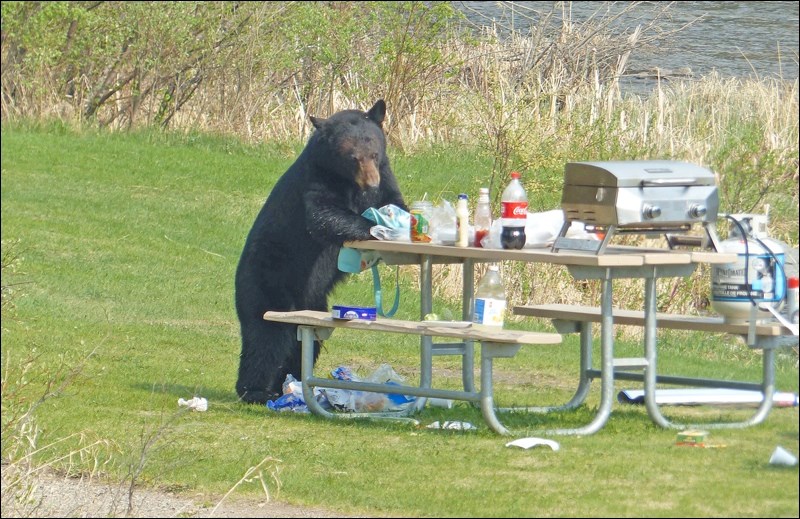The number of bear inquiries received by Saskatchewan Environment between the months of April and July are up 14 per cent from last year’s 525 inquiries to this year’s just over 600 inquiries.
“Keep in mind this includes simple sightings, people seeing (bears) in their yard, it could be actual encounters with bears or a simple question about bears,” says Katherine Conkin, a Wildlife biologist and team leader of the for wildlife management section.
The estimated population of bears in Saskatchewan at the moment is 43,000.
“Similar to most carnivores, it’s really difficult to obtain precise population estimates for bear populations. They are hard to detect, they tend to be very solitary and they are typically in forested environments. (Also) Our standard survey methodologies that we use for big game species like Moose and Elk which are typically arial surveys are done in the winter when bears are hibernating,” explains Conkin for why there isn’t an annual count of bears in the province.
Habitat Characteristics
This doesn’t mean that the fish and wildlife ministry doesn’t keep an eye on the province’s healthy bear population.
“We do have a provincial population estimate, but that is based on habitat characteristics. There has been research done in local areas. They determine what the (bear population) density in the area is. You correlate that to the habitat quality, (low, medium, high), you apply that density (to the habitat quality) you know where that (kind of) habitat is provincially so you get a bit of a caring capacity. We know that a certain habitat can support this number of bears. That is how we get a estimated population, its not going to be precise and it is not going to be measured annually,” says Conkin.
Hunter Harvest Surveys help monitor annual trends
As for keeping an eye on bear trends throughout the year, the government sends out a survey to hunters called the Hunter Harvest Survey. The survey was made mandatory this year.
“It is an annual survey, done across the entire province for all of our licence types. It was voluntary, this year in became mandatory. It asks hunters to report on their hunting activities: their harvest, their efforts, how many days were they out there, what type of firearms did they use and what was their impression of the population,”
This way the hunters give on the ground data about bears and other game.
“We are looking at their harvest versus their effort. If harvest is increasing and effort is going down, hunters are typically having less difficulty finding bears and the population is probably doing well. If on the other hand harvest is going down and hunters are spending ten times as long out there, and still not harvesting any bears, you would suspect that the population isn’t doing as well,” explains Conkin.
The Hunter Harvest survey, along with conservation officers field reports and other surveys all come together to give a good estimate of the province’s annual bear trends.
Covid did not impact local spring hunter licences
Bear hunting is still strong in Saskatchewan. Over the last five years average number of bears harvested by Saskatchewan residents ranged from 700 to 1250. Canadians coming from other provinces harvested 73 to 75 bears and Outfits catering to non residents average 1100 to 1250 bears. With Covid-19 restricting cross border travel, outfits will have recorded smaller numbers this spring, but the province countered that by issuing Saskatchewan residents with two bear tags in some zones.
“The number of people crossing the border will have gone down. Saskatchewan residence were given a second bear tag (in specific hunting zones). That decision was made before Covid. It was unrelated to Covid. It is just that the population was healthy and we felt that those zones could afford more hunting pressure,” says Conkin.
Late spring may be cause of more bear-human interactions
This summer there have been reports of a bear entering a home in northern Saskatchewan, a bear attacking a runner and a bear hanging out in a school yard. However the government says this could be due to a variety of factors, including a late spring that saw the berry crop come in later than normal. This may have lead to bears wandering from usual feeding areas into new areas to find food. So people are asked to continue practicing bear smart behavior.
In the month of July there were three bear interactions of note. Erin McKenzie was injured by a black bear while running at Riding Mountain National Park. In Stanley Mission, north of Lac La Ronge, a bear entered a house and Cory Woywada spotted a bear at the Rocanville School grounds on the beginning of July.



